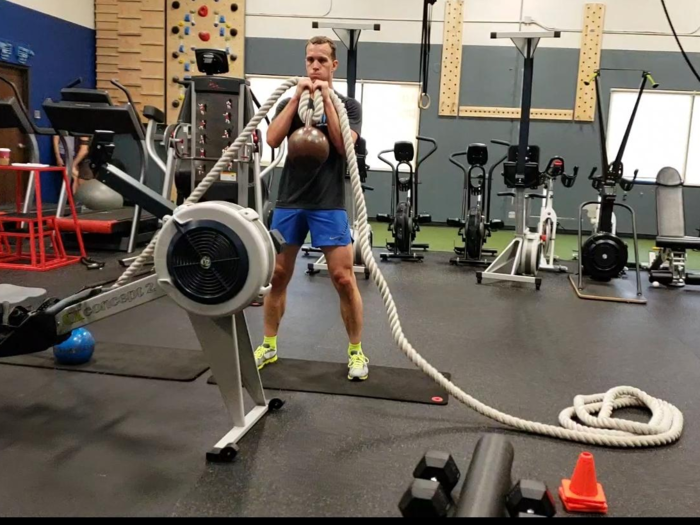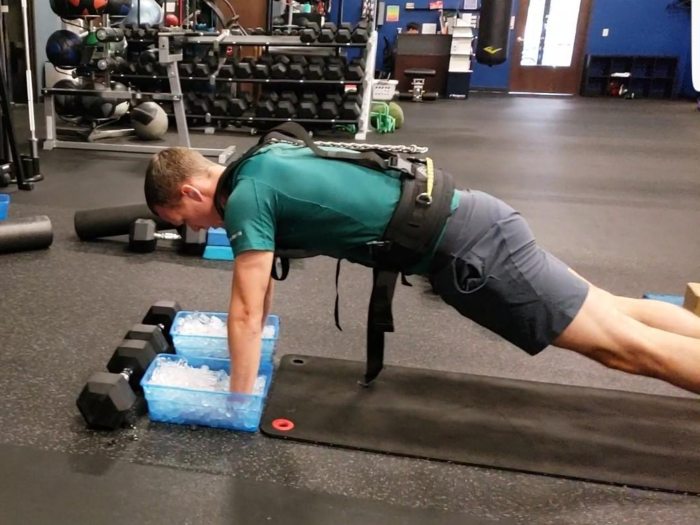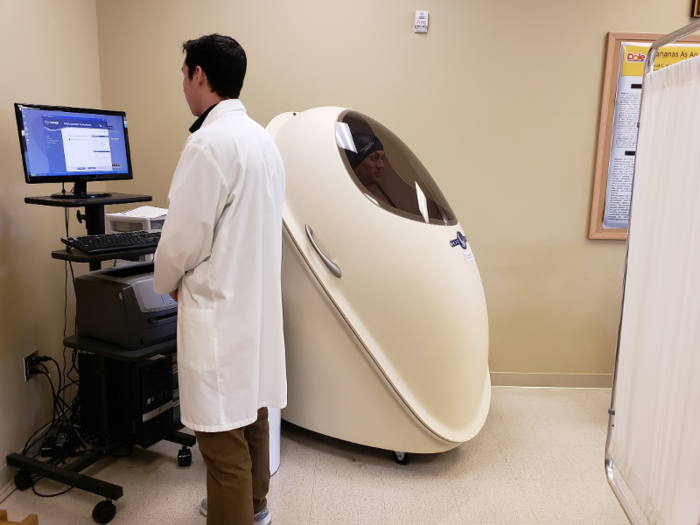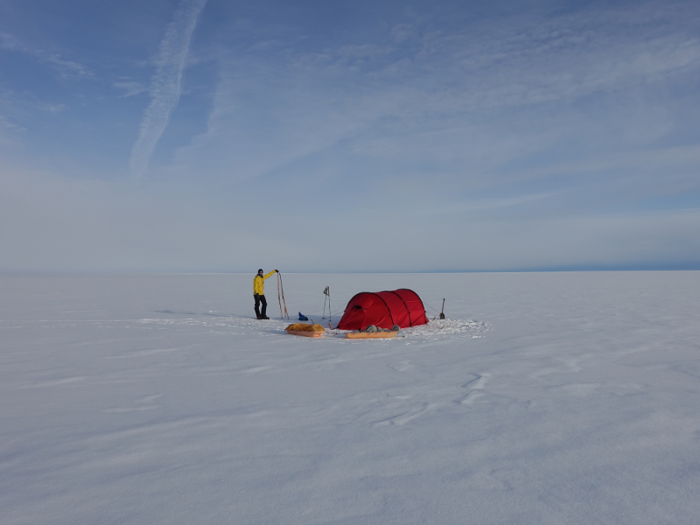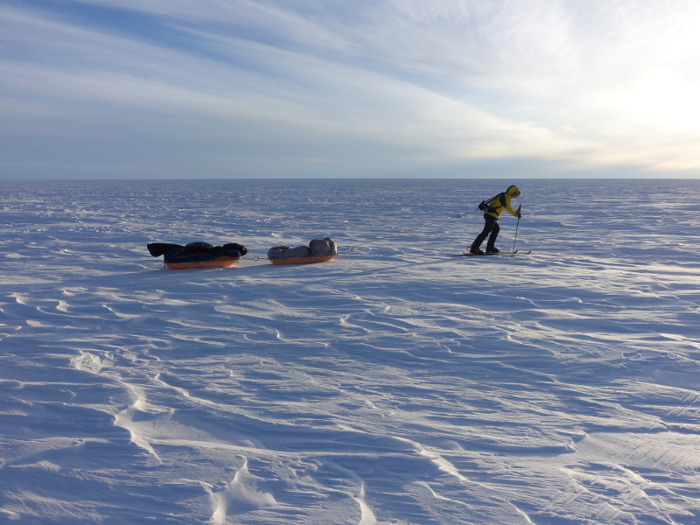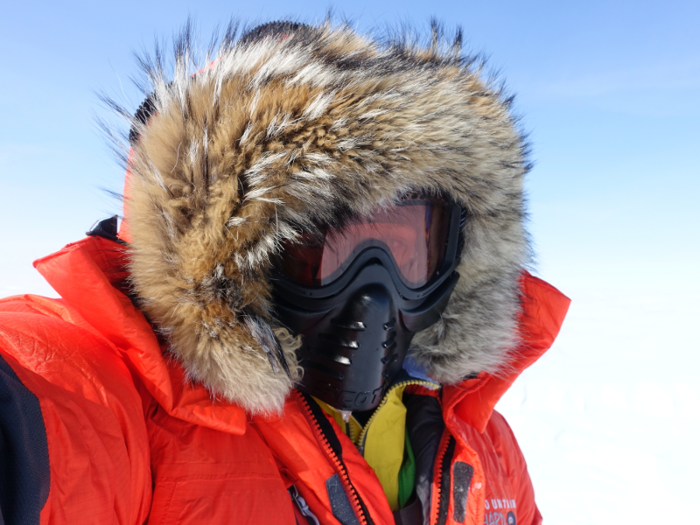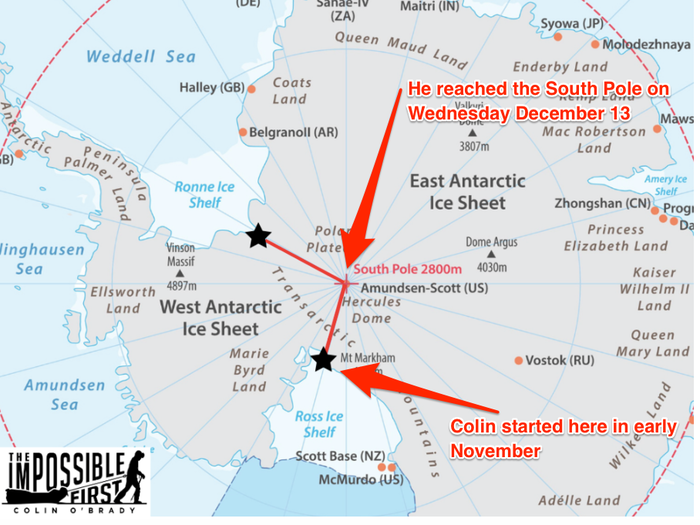Crossing Antarctica without any support, however, was O'Brady's toughest challenge yet. He put on additional muscle mass to prepare, spending months doing intense dead lifts, squats, and other strengthening exercises.
The 6-foot-tall adventurer put on nearly 20 pounds of muscle during this training period, going from about 165 pounds to 183.
That helped O'Brady pull the heavy sled, though he noted that the load got a little lighter every day as he ate his way through the 220-pound food supply. He still carried all his waste out with him, though.
The extra muscle mass did not last long. O'Brady wrote on Instagram that he could feel himself losing weight throughout the trek.
"My calves feel more like the size of my arms at this point," O'Brady wrote on December 16. "My watch is starting to slide around on my wrist and I've had to tighten the strap. However I managed another 20+ mile day on these skinny legs."
During his training, O'Brady underwent blood tests and body composition exams to determine the best combination of nutrients to fuel him.
These test results were used by his sponsor, Standard Process Supplements, to develop special "Colin Bars."
O'Brady ate bites of these bars every 90 minutes , consuming a majority of his calories this way. The bars contained nuts, seeds, and coconut oil.
O'Brady said he wanted to simulate the experience of crossing Antarctica before starting the journey. So he spent 30 days in Greenland with his gear.
The test run involved traveling 400 miles in harsh conditions.
Still, no practice trek could fully prepare O'Brady for spending more than 50 days in total solitude. (His wife, Jenna Besaw, was just a satellite phone call away, however.)
Beyond physical training, O'Brady has spent years preparing himself mentally. He told Business Insider that he enjoys going on Buddhist retreats for Vipassana meditation.
These meditation retreats involve 10 days of complete silence, O'Brady said — no reading, writing, or eye contact with other people.
"It sounds crazy, but it's actually been one of the most beautiful gifts in my entire life," he said. "It's completely free to go and it's just been a great way to have more awareness around myself, my mind, my body, my spirit."
Meditation helped O'Brady prepare for the solo trek because it showed him that he was capable of being alone for a long period of time, he said.
O'Brady's drive also came from a past trauma. Ten years ago, he was severely burned in a fire. Doctors said he would never walk normally again. O'Brady said he dubbed the Antarctica mission "The Impossible First" to highlight the possibility of overcoming extreme challenges.
"Obviously I'm certainly walking again, but to prove that I could get out of that hospital room, get out of that wheelchair and do something like this — or the other things that I've accomplished — I think is a testament not just to me, but to the spirit of the human spirit," O'Brady said.
Since finishing his historic journey, O'Brady has caught up on sleep and is waiting for Rudd, the British explorer, to finish his trek. Rudd was less than 20 miles away from the finish line as of Friday morning.
Rudd is following the same path that British explorer Henry Worsley attempted in 2016. Worsley, a close friend of Rudd's, died trying to cross the southern continent.
O'Brady wrote on Instagram that Worsley is part of a long line of explorers that inspired him to finish The Impossible First.
"Hopefully my project inspires others to push the envelope even further," O'Brady wrote. "I’m looking forward to cheering others on as we continue to push the limits of human potential in the polar regions and beyond."

